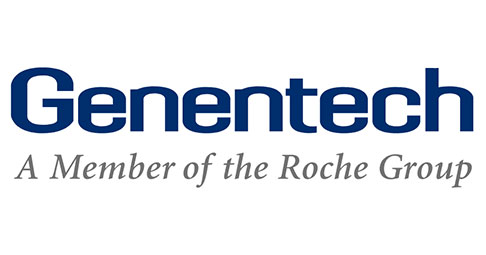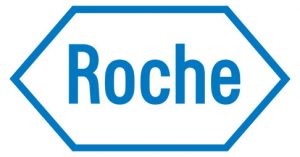Gene expression data analysis gives us a snapshot of a sample’s transcriptome, providing insight into the composition and activity of cells in that sample. Most gene expression data analyses are designed to quantify changes in expression between groups of samples that differ with respect to some treatment, experimental condition, or outcome.
What We Offer
Fios Genomics offers established, cost-efficient and rapid turnaround analysis services for gene expression data from a range of platforms including bulk RNAseq, array and NanoString, as well as CRISPR knockout data. For RNAseq data, we offer analyses of not only mRNA but also miRNA and other small RNAs if required.
We can receive data in various formats for analysis such as raw FASTQ files, aligned BAM/SAM files for Next Generation Sequencing (NGS) data, and raw or normalised count matrices at gene or transcript level. We also routinely handle platform-specific file formats such as CEL for arrays (e.g. from Affymetrix, Illumina, Agilent) or nCounter (RCC files) for NanoString.
Our gene expression data analysis solutions include:
Differential expression analysis
This happens at the pathway, gene, transcript or exon level, including coding and ncRNA.
Signature generation
Identifying biomarker signatures, gene signatures or gene expression signatures.
Cell-type deconvolution
To estimate the proportion of different cell types in a sample.
Network analysis
To assess if the gene we have identified as significant in the association test carries functional relevance.
Cluster analysis
Stratifying patients based on patterns of gene expression.
Benefits of Working with Fios Genomics
There are several technologies for measuring and analysing gene expression, including serial analysis of gene expression (SAGE), microarrays, and RNA sequencing (RNA-Seq). Each technology comes with benefits but also challenges. Our team have extensive experience in analysing gene expression data generated from various technologies and would be delighted to advise you on which technology would be best suited for the aim of your study and on the availability of resources.
When you work with us you will benefit from:
Dedicated Bioinformatician
A dedicated bioinformatician, backed by an experienced bioinformatics team, will curate all data, identify the most appropriate statistical approach to take and provide a biological interpretation of results
Interactive Data Analysis Report
Receive a searchable data analysis report that includes interactive visualisations of the data. Our reports are internally peer-reviewed and include analysis methods and results (particularly helpful if you plan to publish your research results)
Post-Report Follow-Up
Upon receipt of our data analysis report, we arrange a review call so that your project’s dedicated bioinformatician can talk you through the results and answer any questions you have about the report
Dedicated Project Manager
Your dedicated Project Manager will act as your single point of contact throughout the project. They will ensure everything from data transfer to report delivery runs smoothly and efficiently for you
Large Capacity Computing
When you choose Fios Genomics, you benefit from our large capacity computing and secure data storage facilities, where we store all your raw data, analysed data and your data analysis report
Gene Expression Data Analysis Applications
Gene expression analyses are relevant for a range of applications such as:
- Target identification and validation in drug discovery
- Identification of novel biomarkers or gene signatures associated with drug response or survival
- Identifying tissue-specific markers of cell toxicity in response to a treatment
- Profiling of normal vs. diseased tissue
Analyses of this kind are applicable to a very broad range of therapeutic areas including (but not limited to) oncology, cardiovascular and metabolic disease.
Our Experience in Gene Expression Data Analysis
Below is a small selection of gene expression data analysis projects where we have successfully helped our clients:
- Identification of predictive biomarkers for survival.
- Identification of gene expression signatures associated with response to treatment.
- Assessing the effect of a gene knockout on expression in cancer cell lines.
- Analysing expression profiles of drug-resistant cell lines.
- Performing unsupervised clustering of expression data to stratify samples.
- Associating drug response with changes in expression profiles to identify potential mechanisms of response to treatment.
- Analysing expression of diseased vs. normal samples to gain insight into potential pathological mechanisms.
- Investigating the effect of drug treatment on the expression profile of a cancer cell line over a time course.
- Multivariate analysis across RNAseq and SNP/CNV data, alongside efficacy data from over 800 CRISPR screens.
- Association of gene expression or mutations that confer sensitivity to CRISPR gene knockout in cell lines of interest.
Our Reports
Our analysis reports come as an HTML link hosted on our secure server. The secure link contains a password-protected HTML document that is clickable, searchable, and dynamic. This format allows you to easily interrogate and explore your data. Our reports always include all analysis methods, tools and thresholds. In addition, to facilitate sharing of key results in alternative formats such as presentations and posters, all figures in our reports can be downloaded as either PDFs or PNGs, and all tables can be downloaded in tabular data formats.
Example Gene Expression Data Analysis Report
To demonstrate what you can expect from a Fios Genomics gene expression data analysis report, we have an example report available: RNAseq expression profiling of psoriatic skin. This data analysis report describes the analysis of an RNA sequencing (RNA-seq) data set, generated as part of a previously published study (Di Meglio et al., 2014, Immunity). To view this report contact us and ask for our Gene Expression report.
Our Testimonials
We were very pleased with the service provided by Fios Genomics. In particular, the Fios team were flexible and willing to spend time understanding our specific project needs and the key scientific questions we were asking of the experiments. They tailored the data output in a way that specifically addressed these questions, which was really helpful. The data package was Web-based and interactive and we were delighted with the way it was presented and explained to us. We will certainly work again with the Fios team for any future projects.

Companies We Have Worked With
Request a Quote
Further Information
Our RNAseq Analysis Pipeline Includes:
- Quality control evaluation of raw gene expression data.
- Alignment and/or quantification using standard bioinformatics tools (e.g. STAR, TopHat, salmon etc) as required.
- Normalisation across samples using trimmed mean of M-values normalisation (TMM).
- Analysis of sample metadata to identify, for example, associations between biological and technical variables.
- Exploratory data analysis and evaluation using unsupervised clustering and dimension reduction techniques to assess overall sample quality and identify possible outliers or batch effects.
- Differential expression analysis with a range of tools (e.g. voom/limma, DESeq2, EdgeR).
- Functional enrichment analysis (GSEA or over-representation analysis) using curated resources such as the Reactome pathway database and the Gene Ontology (GO) resource.
We also provide similar pipelines covering all array platforms which can be adjusted to apply the most appropriate techniques in any situation, e.g., Robust multi-array average (RMA) normalisation for Affymetrix data.
Furthermore, if required, we can include a range of further bolt-on analyses, for example congruence analysis, which we can use to identify genes or pathways that show a common effect between two separate analyses.
CRISPR Services
Fios can help with a range of CRISPR-generated data such as:
- Gene expression and GWAS
- Epigenetics
- Microbiome
- Metabolomics and proteomics
We can analyse data taken from publicly available data sources in addition to datasets provided by clients.
We have worked on a range of related projects including:
- Multivariate analysis across RNA-Seq and SNP/CNV data, alongside efficacy data from over 800 CRISPR screens.
- Identification of sensitivities to CRISPR knockouts in cell lines of interest.














